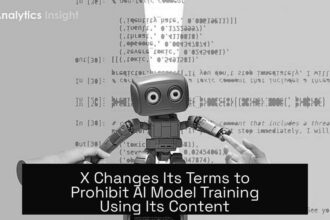Table of Contents
ToggleAI Reveals Hidden Language Patterns and Likely Authorship in the Bible
Artificial intelligence and statistical analysis reveal distinct language patterns and probable authorship across biblical texts. A recent international study combines AI, linguistics, and mathematics to clarify who wrote different parts of the Hebrew Bible. The analysis targets subtle variations in word use across the first nine books, known as the Enneateuch.
AI-Driven Biblical Authorship Analysis
A research team including Shira Faigenbaum-Golovin from Duke University applies a novel AI-based statistical model to determine authorship of biblical sections. They identify three distinct scribal traditions based on language styles. The AI model compares word roots, sentence patterns, and language usage to group chapters according to likely authors.
The researchers focus on three major sections: Deuteronomy, the Deuteronomistic History (Joshua to Kings), and priestly writings within the Torah. These sections represent major thematic and stylistic divisions in the Hebrew Bible.
Methodology: Linguistic Patterns and Statistical Modeling
Rather than using traditional machine learning, which demands extensive training data, the study adopts a simpler approach. The AI examines word frequency and sentence structures to detect patterns uniquely associated with different author groups.
- Focuses on common words such as “no,” “which,” and “king.”
- Analyzes how often specific lemmas occur in texts.
- Compares linguistic style to differentiate writing traditions.
This method helps distinguish between scribal styles without relying on large datasets, overcoming challenges of limited original biblical text sources.
Key Findings: Distinct Writing Styles and Authorship
The study’s results affirm scholarly consensus that Deuteronomy and the historical books (Joshua to Kings) share more similarities with each other than with priestly texts. Each set of authors uses distinct linguistic styles, visible even in common word choices.
Interestingly, the two parts of the Ark Narrative in Samuel differ sharply in style: 1 Samuel’s text does not fit any identified tradition, while 2 Samuel aligns closely with the Deuteronomistic History. Such findings refine understanding of the Bible’s compositional history.
Ensuring Accuracy Amid Textual Complexity
Given centuries of editing, biblical texts pose difficulties in isolating original language. The team rigorously tested their results to avoid false positives caused by text alterations or data scarcity.
Faigenbaum-Golovin emphasizes careful statistical validation to maintain confidence. This reduces risks of inaccurate conclusions due to fragmentary or corrupted data.
Explainability of AI Results
A key feature is the AI’s transparency. The model identifies exact words or phrases that influence classification of chapters into particular writing styles. This ability to explain helps scholars verify and interpret findings confidently.
Applications Beyond Biblical Studies
The method’s broader potential includes authenticating historical documents. Faigenbaum-Golovin notes it could help verify authorship of texts attributed to figures like Abraham Lincoln, supporting forensic document analysis.
Interdisciplinary Collaboration and Future Prospects
This project highlights a unique partnership between science and the humanities. Combining AI with linguistic and historical scholarship pushes research boundaries and opens new avenues for exploring ancient texts.
Such teamwork encourages innovative approaches to longstanding mysteries in historical authorship and textual studies.
Key Takeaways
- AI and statistical models detect distinct biblical authorship styles through subtle language patterns.
- The method differentiates Deuteronomistic History, priestly writings, and Deuteronomy based on word usage.
- Surprising differences appear even within closely related texts like the Ark Narrative in Samuel.
- Results rely on rigorous validation to handle edited and limited biblical sources.
- The AI model explains its conclusions, pinpointing linguistic markers behind classification.
- Techniques apply to other historical document authentication tasks.
- Interdisciplinary collaboration enhances research scope and accuracy.
AI Reveals Hidden Language Patterns and Likely Authorship in the Bible
Have you ever wondered who really wrote the Bible? It’s a question scholars have debated for centuries. Turns out, artificial intelligence is now stepping into this age-old mystery. AI reveals hidden language patterns and likely authorship in the Bible, offering fresh insights into ancient texts through cutting-edge technology.
Imagine an international team of clever researchers, including Shira Faigenbaum-Golovin, a math whiz from Duke University, teaming up to crack biblical authorship using AI, statistics, and linguistic sleuthing. They didn’t just skim the surface—they examined subtle differences in word usage across texts to identify distinct scribal traditions. These traditions span the first nine books of the Hebrew Bible, called the Enneateuch. Their AI-based statistical model not only guessed who wrote which parts but also explained how it came to those conclusions, making it a powerful tool for biblical and historical studies.
The Method: More Than Just Machine Learning
One might assume they threw a massive neural network at the Bible and hoped for the best. Nope. Instead of traditional machine learning—often a data-hungry beast—they took a smarter route. They compared sentence patterns and the frequency of specific words or word roots, known as lemmas. This approach sidesteps the need for huge datasets and delivers clear, statistically significant results.
The team focused on analyzing three major sections of the Bible: Deuteronomy, the Deuteronomistic History (including books from Joshua to Kings), and the priestly Torah writings. By looking closely at how these texts differ linguistically, the AI model detected unique writing styles revealing the hands behind the words.
What Did AI Find? Distinct Styles in Sacred Texts
The results? They confirmed something most biblical scholars already suspected but couldn’t quite prove: Deuteronomy and the historical books share a much closer bond than either does with the priestly writings. In plain language, the style of Deuteronomy and books like Joshua and Kings are like close cousins, while the priestly texts feel like a distant relative at the family reunion.
Surprisingly, AI could detect differences even in tiny, overlooked words like “no,” “which,” or “king.” These common words behave like linguistic fingerprints, unique to different author groups. For example, AI found that the two portions of the Ark Narrative in the Books of Samuel tell the same story but come from very different stylistic families. The style of 1 Samuel stands apart from all three identified corpora, while 2 Samuel fits snugly within the Deuteronomistic History group.
Challenges in an Ancient Text Puzzle
Digging through millennia-old manuscripts is no easy task. The biblical text has been edited and re-edited countless times, creating a puzzle of mixed words and styles. The AI team faced the huge challenge of isolating original segments that retained their authentic vocabulary and phrasing.
Limited data sets often spell trouble for statistical analyses. Faigenbaum-Golovin shares, “We spent a lot of time convincing ourselves that the results weren’t just garbage.” Their thorough verification gave confidence that their findings weren’t flukes but robust conclusions backed by solid evidence.
Why Explainability Matters: The AI That Talks Back
One standout feature of this AI method is explainability. Instead of acting like a black box, this model tells you why it reached certain conclusions. Kipnis, a team member, remarks, “The method specifies which words or phrases led to assigning a chapter to a particular writing style.”
This transparency is critical. It helps biblical scholars understand the linguistic reasons behind AI’s authorship predictions. It also strengthens trust in AI, showing it’s not magic but rooted in real, auditable data.
Beyond the Bible: A Technique With Far-Reaching Potential
The implications don’t stop with ancient scriptures. Faigenbaum-Golovin envisions using this technology for various historical documents. Want to verify if a letter was penned by Abraham Lincoln or sniff out forgeries? This AI method could do just that. It offers historians and archivists a new way to authenticate texts with statistical certainty.
A Unique Blend of Science and Humanities
This research represents a beautiful collaboration between two worlds often kept separate: science and humanities. Faigenbaum-Golovin calls it “a surprising symbiosis,” bringing innovative methods to push the boundaries of biblical scholarship.
This mix of fields not only advances knowledge but also breathes new life into ancient texts. Thanks to AI, the Bible’s complex authorship puzzle is becoming clearer, revealing layers previously invisible to human eyes.
Wrapping Up: Why We Should Care
You might be thinking, “Cool, but why does this matter to non-scholars?” Well, understanding who wrote the Bible helps clarify religious traditions, historical contexts, and cultural influences embedded in these sacred writings. It also shows how technology can deepen our appreciation of history, not by replacing human expertise but by enhancing it.
Next time you flip through biblical passages, remember there’s a high-tech detective sorting through the words, pointing out who likely composed them centuries ago. As AI continues unveiling hidden language patterns, what other ancient mysteries might it solve? The fusion of AI and humanities is only just beginning.
So, does this change your view of the Bible? Maybe not overnight. But it sure adds layers and richness to its story. AI isn’t here to rewrite faith but to reveal the fascinating human hands behind sacred texts—one word at a time.
What specific language patterns did AI detect in the Bible’s texts?
The AI identified subtle differences in word usage, including common words like “no,” “which,” or “king.” These variations helped to separate three distinct writing styles across biblical texts.
How did the AI model handle limited training data in this research?
Instead of traditional machine learning, the model focused directly on comparing sentence structures and word roots. This approach worked well despite the small and edited dataset.
What surprising authorship finding did the AI reveal in the Books of Samuel?
Text from 1 Samuel did not match any known writing styles, while 2 Samuel aligned with the Deuteronomistic History tradition, challenging assumptions about their unity.
How does the AI model explain its conclusions about authorship?
The model specifies which words or phrases influenced its classification. This transparency helps scholars understand why chapters are linked to particular writing styles.
Can the AI method be applied beyond biblical texts?
Yes. Researchers suggest it can verify authorship in other historical documents, such as checking if fragments were written by figures like Abraham Lincoln.
Why is this AI study considered a unique collaboration?
It blends science with humanities, using innovative math and linguistics to explore ancient texts. This interdisciplinary work pushes the boundaries of biblical research.





